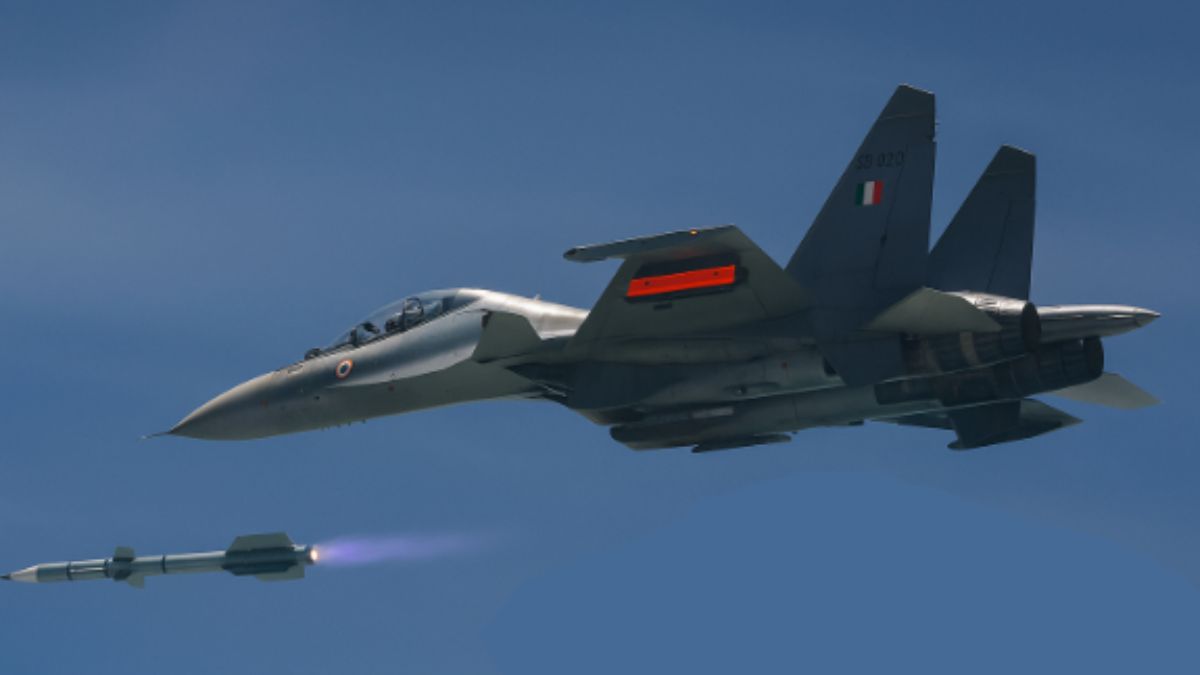The Defence Research and Development Organisation (DRDO) and the Indian Air Force (IAF) have successfully conducted a flight test of the indigenous Astra Beyond Visual Range Air-to-Air missile (BVRAAM), which is equipped with an indigenously developed Radio Frequency (RF) seeker. The test was carried out from the Su-30 Mk-I platform off the coast of Odisha, marking a significant achievement in India’s defence capabilities. This successful test is a crucial step forward in the development of advanced air defence technologies.
This development is particularly important as it strengthens India’s self-reliance in critical defence technology. The successful demonstration of the Astra missile with its indigenous RF seeker brings India closer to having fully domestically developed air-to-air missiles with state-of-the-art guidance systems. On Friday (July 11, 2025), two successful missile launches were conducted against high-speed unmanned aerial targets at varying ranges and launch platform conditions.
Why is an indigenous RF seeker important?
An RF seeker (Radio Frequency seeker) is a type of missile guidance system that helps the missile detect, track, and home in on a target using radio frequency signals, usually radar signals, emitted or reflected by the target.
The RF seeker is the “eye” of the missile during its terminal phase, where it guides the missile precisely to its target, especially at long ranges where the launching aircraft can no longer provide accurate target updates.
RF seekers are complex technologies traditionally sourced from countries like Russia or Israel. The indigenous RF seeker improves India’s defence self-reliance, especially in sensitive systems like air-to-air missiles.
How did the missile perform during the test?
The flight-test involved two launches against high-speed unmanned aerial targets, with the missiles being launched at different ranges and from different launch platform conditions. Both launches were successful, with the missiles hitting their targets with pinpoint accuracy.
The test validated the performance of the Astra missile system, especially the RF seeker, which was indigenously designed and developed by DRDO. The missile, which has a range exceeding 100 kilometres, also performed well in terms of its guidance and navigation systems.
During the test, all subsystems, including the RF seeker, performed as expected. The missile successfully destroyed its targets, confirming the effectiveness of the weapon system.
The performance data was captured by range tracking instruments deployed at the Integrated Test Range in Chandipur, validating the missile’s capabilities. The successful engagement of the targets at various aspects and ranges demonstrates the missile’s versatility and accuracy in real-world conditions.
What is the significance of this achievement for India’s defence capabilities?
The successful flight-test of the Astra missile with an indigenous RF seeker is a major milestone in India’s defence technology development. Defence Minister Rajnath Singh praised the efforts of DRDO, the IAF, and the industry involved in the missile’s development. The missile’s performance with the indigenously developed seeker is a key achievement, marking progress towards greater self-reliance in critical air defence technologies.
Additionally, more than 50 public and private industries, including Hindustan Aeronautics Limited, contributed to the successful realisation of the Astra missile system, reflecting India’s growing defence industrial capabilities.
The successful test of the Astra missile enhances India’s air-to-air combat capabilities, making it one of the most advanced systems of its kind in the region. This achievement strengthens India’s defence infrastructure and positions the country as a leader in the development of advanced missile technologies.
